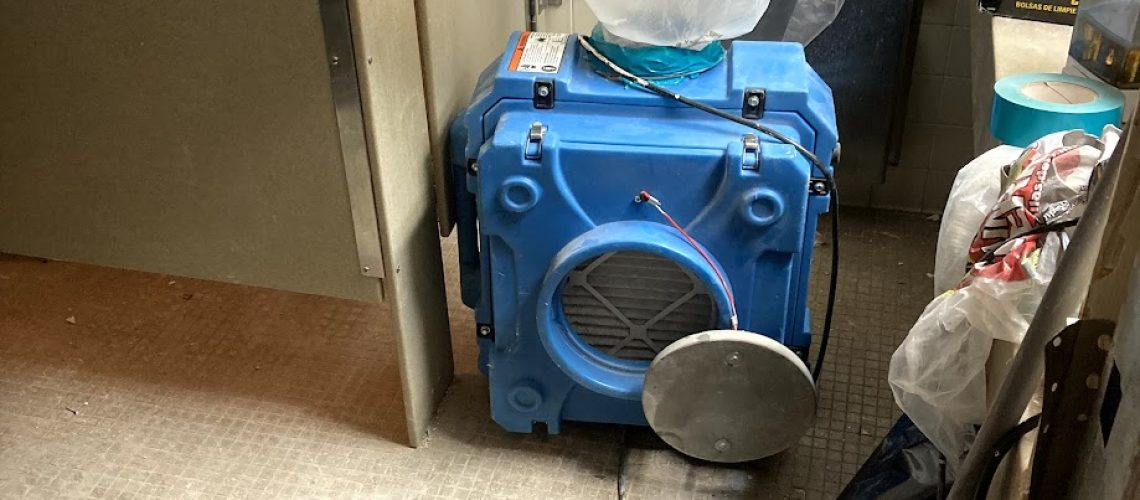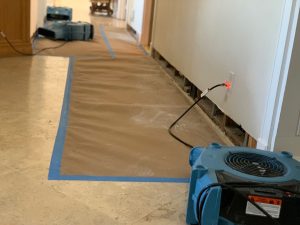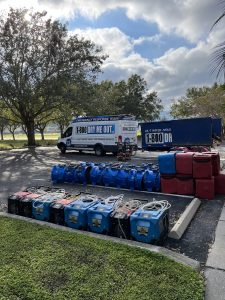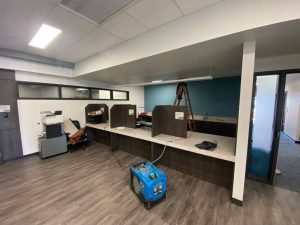When most people think about water damage, they picture soggy carpets, warped floors, and maybe a stained ceiling. But one of the most overlooked effects of water damage happens in the air you breathe, specifically, how it can seriously impact your indoor air quality.
At Dry Me Out, we’ve seen firsthand how water issues go far beyond what you can see. Damp environments, hidden leaks, and improper drying can lead to harmful pollutants in your home’s air. Let’s walk through what that really means, how it can affect your health, and what you can do to protect your home and family.
Key Takeaways
- Water damage can significantly lower your indoor air quality, even after the visible signs are gone.
- Excess moisture promotes mold growth, which releases airborne spores that can trigger allergies and respiratory issues.
- Dust mites and bacteria thrive in humid environments, further degrading air quality.
- Musty odors are often signs of microbial growth and poor ventilation caused by hidden water damage.
- Professional water damage restoration and proper dehumidification are critical for maintaining safe indoor air quality.
- Regular inspections and quick action can help prevent long-term air quality issues.
The Link Between Water Damage and Indoor Air Quality
Indoor air quality (IAQ) refers to the condition of the air inside your home or business. While we usually think of outdoor pollution as a major concern, poor indoor air quality can be just as harmful, especially when it’s caused by hidden water damage.
When water enters your space it soaks into porous surfaces like drywall, carpet, and wood. If these things are not completely dried out, that moisture lingers, creating the perfect environment for mold, mildew, and other harmful contaminants to thrive.
The air inside your home then circulates those contaminants, meaning you could be breathing in harmful particles without even realizing it.
Mold and Mildew: The Prime Suspects
One of the first and most dangerous consequences of water damage is mold growth. Mold spores are everywhere, but they need moisture to grow. When water damage occurs and isn’t properly dried out, mold can start developing in as little as 24 to 48 hours.
Once mold starts growing, it releases tiny spores into the air. These airborne particles are easily inhaled and can cause:
- Allergic reactions (sneezing, runny nose, itchy eyes)
- Asthma flare-ups
- Coughing or wheezing
- Chronic sinus infections
- Headaches and fatigue
For people with compromised immune systems, infants, or the elderly, the health risks can be even more serious.
At Dry Me Out, we often find mold hiding behind walls, under flooring, or inside HVAC systems, which are all places where moisture goes unnoticed and air circulation spreads contaminants through the entire home.
Bacteria and Viruses Thrive in Damp Environments
Water-damaged areas aren’t just a playground for mold, they can also become breeding grounds for bacteria and viruses. Any standing water or soaked building material can harbor harmful microorganisms that contribute to poor air quality.
In many cases, bacteria from sewage backups or floodwaters pose serious health hazards. Even clean water from a burst pipe can become contaminated if it is left sitting too long. As the bacteria multiplies, they can evaporate into the air as bioaerosols (tiny airborne particles that you breathe in).
This invisible bacterial contamination is another reason why fast, professional water removal and sanitation is so important. It’s not just about cleaning up the mess, it’s about protecting your health.
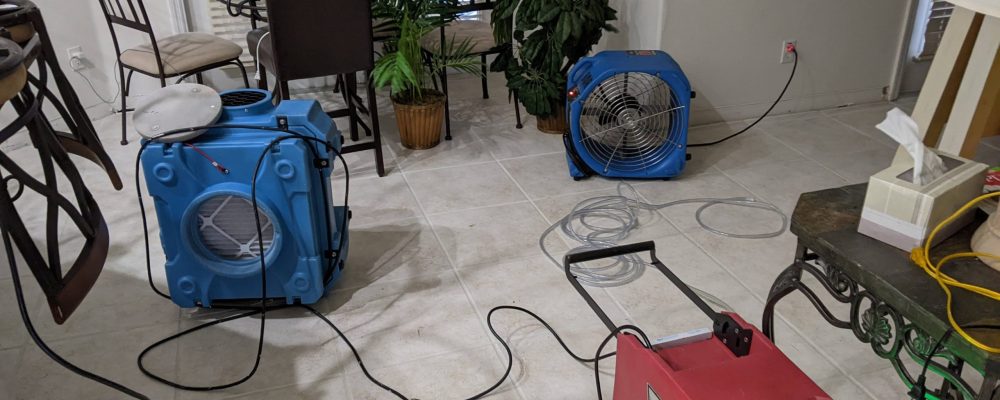
Humidity, Dust Mites, and Poor Ventilation
Even after the obvious water has been cleaned up, elevated humidity can linger in a home or business for weeks if not addressed properly. High humidity doesn’t just feel uncomfortable, it directly affects your air quality.
Excess moisture supports the growth of dust mites, microscopic bugs that feed on dead skin cells and thrive in damp environments. Their waste products are a major trigger for allergies and asthma.
Too much humidity can also cause wood to swell and drywall to weaken, leading to cracks and structural damage that further compromise your indoor environment.
Plus, without proper airflow, humidity can get trapped in small spaces like closets, crawlspaces, or basements, which are places where air circulation is already poor. That’s why dehumidifiers and proper ventilation are critical tools in any comprehensive water damage restoration plan.
Recognizing the Warning Signs
Wondering if water damage might be affecting your indoor air? Here are some common red flags:
- Musty or damp smells that linger even after cleaning
- Visible mold or mildew, especially in corners, closets, or around windows
- Peeling paint or wallpaper, indicating moisture behind walls
- Increased allergy symptoms or respiratory issues while indoors
- Condensation on windows or walls, especially in basements or bathrooms
- Warped wood or sagging drywall, often a result of hidden water exposure
If you’re noticing any of these red flags, it’s time to call in a professional. These signs don’t just point to water damage, they signal a potential decline in your home’s air quality.
The Long-Term Effects of Poor Indoor Air Quality
Poor indoor air quality caused by water damage doesn’t just affect your comfort, it can affect your long-term health and even the structural integrity of your home.
Breathing in mold spores, bacteria, and dust mites over time can lead to chronic respiratory conditions. Children and seniors are especially vulnerable. In some cases, extended exposure to contaminated air has been linked to more serious health issues, including immune system suppression and neurological problems.
From a structural standpoint, water damage that’s not properly remediated can weaken beams, walls, and foundations. It also lowers your property’s value and can make it harder to sell your home in the future.
That’s why it’s so important to take your indoor air quality seriously and to address water issues the right way from the start.
How to Protect Your Indoor Air Quality After a Water Incident
If you have had any kind of water damage, even something minor, it’s important to take steps to protect your air quality:
- Use a dehumidifier to reduce excess moisture.
- Make sure your HVAC system is inspected and clean—especially ducts and filters.
- Keep air circulating with fans or open windows (if the weather allows).
- Remove and replace materials that can’t be fully dried, such as soaked carpet or drywall.
- Watch for signs of mold and call in professionals at the first sign of trouble.
And most importantly, don’t assume the air is safe just because the area appears to be dry. Often, the worst damage is the part you can’t see.
Trust the Pros at Dry Me Out
We’ve been helping homeowners and businesses across Florida for years, and we know how to spot the hidden threats water damage can bring. From fast water extraction to full-scale air purification, we’re committed to restoring not just your property, but your peace of mind, too.
Whether you’ve just discovered a leak or are dealing with the aftermath of a major flood, don’t wait. Poor indoor air quality can have lasting consequences, but the right help can make all the difference.
Need Help Fast?
Don’t let water damage take a toll on your indoor air. Contact Dry Me Out today for fast, reliable service and a cleaner, healthier home.

